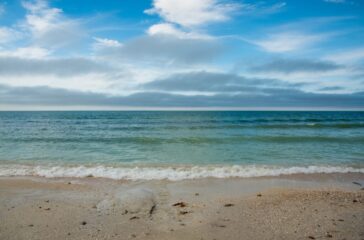Poop pathogens threaten US beachgoers nationwide, study finds
By Shannon Kelleher
Beachgoers may be on the lookout for sharks and jellyfish, but one danger lurking beneath the waves this summer originated onshore — pathogens from human and farm animal waste. Over half of US beaches tested in 2022 harbored potentially unsafe levels of contamination, according to an analysis released today by the organizations Environment America Research & Policy Center and Frontier Group.
The study found that 1,761 out of 3,192 coastal and Great Lakes beaches tested across the country last year showed fecal contamination levels above an Environmental Protection Agency (EPA) benchmark on at least one day that year. 363 of the beaches showed potentially unsafe levels on at least a quarter of the days they were tested. Much of the contamination comes from stormwater runoff in developed areas, outdated and deteriorating sewage systems, and factory farming, the authors write.
Swimming in water contaminated with fecal bacteria can cause gastrointestinal and respiratory illness, as well as infections, according to the EPA’s website.
“If it [had] just rained the day before, that might not be the day to go to the beach, particularly if there are local sewage treatment plants that discharge anywhere [nearby],” said John Rumpler, Clean Water Director at Environment America Research & Policy Center and an author of the report.
Rumpler also advised checking real-time water quality data that many communities use to alert beachgoers before traveling to a favorite vacation spot.
 EWG
EWG